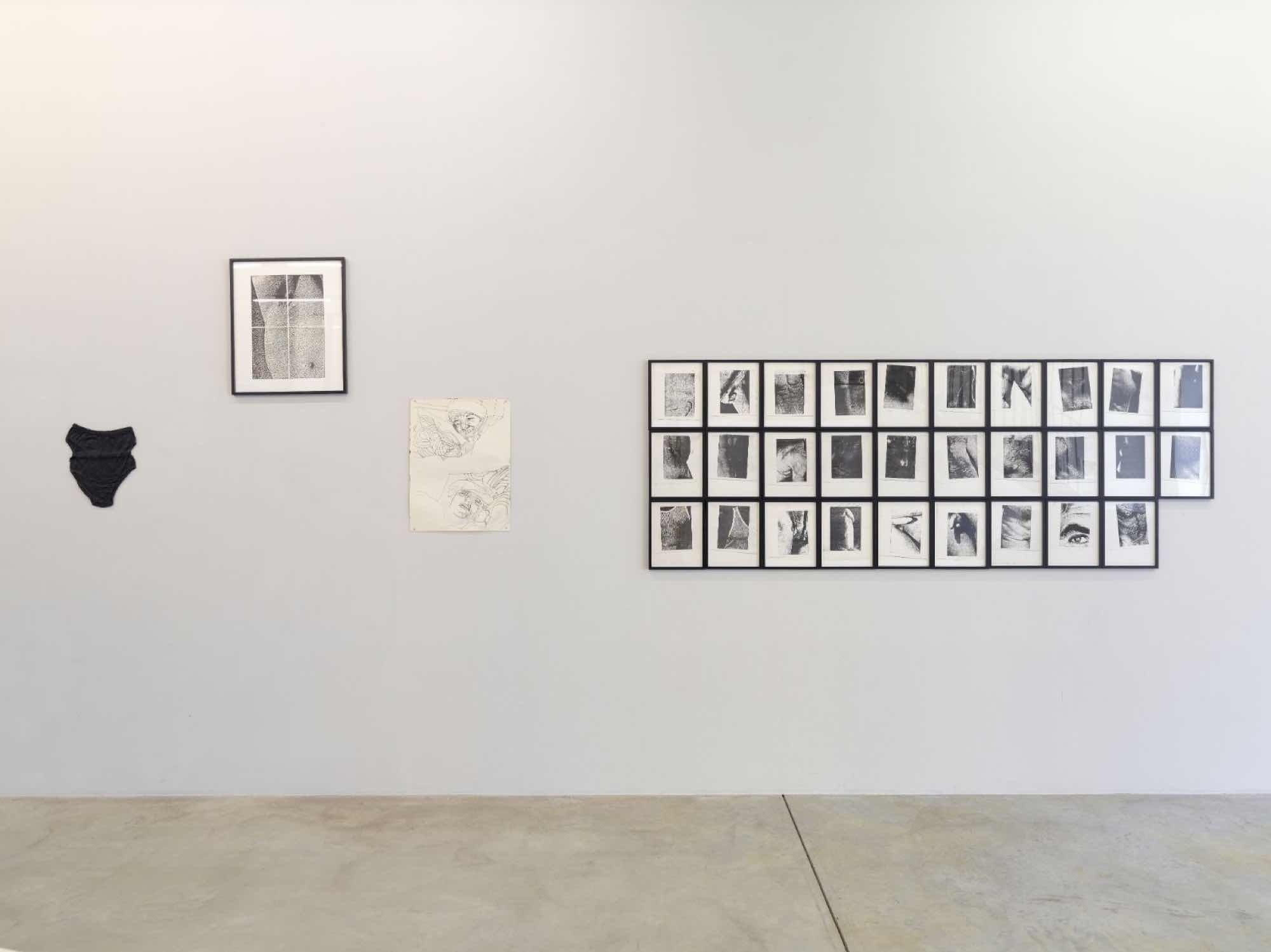Barbara Hammer & Hudinilson Jr
17 Mar - 15 Apr 2023
KOW and Galerie Jaqueline Martins are simultaneously showing in Berlin and São Paulo two pioneers of queer emancipation: Barbara Hammer, born in Hollywood in 1939, and Hudinilson Jr, born in São Paulo in 1957. Although Hammer's films have been acknowledged from the onset, her other artistic works have only received international attention in the 2010s, as has Hudinilson's work. The exhibitions at the two galleries mark the first time both artists can be seen together.
Hudinilson Jr. grew up in São Paulo, Brazil under a military dictatorship and in a climate of extreme homophobia. He was a member of the group 3NÓS3, with whom he created his earliest actions. Under cover of darkness, he pulled plastic bags over the heads of heroes’ monuments overlooking the urban scene, denouncing the regime’s use of torture while also attacking prominent public symbols of state (Ensacamentos /Baggings, 1979). Barbara Hammer may have faced less manifest danger in comparatively liberal California, but she too, confronted the symbols of (male) power. For example, in Superdyke (1975), a group of lesbian activists storm San Francisco City Hall.
It is striking to note the similarities between the two artists. They both combatively put their own bodies and their homosexuality central in their art. Early photographs and works on paper that flank Hammer’s often very explicit experimental films from the 1970s and 1980s (like the film Sync Touch, 1981) visualize her own erotic pleasure as well as the struggle for public recognition of female sensuality and lesbian identity as expressed in her drawing Dark Vagina or Moon in the Head, (1969/1971).
Besides photography, collage techniques were key to Hudinilson’s work. He was one of the first artists to make extensive use of the Xerox photocopier, literally mounting himself to the machine to make images of his body—not out of an obsession with sex, as some critics may have implied, but in an act of self-scrutiny and a search for visual structures that might convey the sensuality and desire of human skin and flesh. See Narcisse, Exercício de me ver II / Exercise in Seeing Myself II and Untitled, both created in 1982.
In many ways, their work had an impact that went far beyond their creative output. When the AIDS epidemic broke out, both Hammer and Hudinilson took up the fight against the demonization of homosexuals and emerged as important voices of the gay and lesbian emancipation movements in their respective countries. Yet, unlike Hammer, whose art continued to evolve and grow until her death in 2019, Hudinilson gradually withdrew from public engagement; marginalized and boxed in by a conservative and still homophobic society and spurned by the art world and art market, he spent many years as a recluse in his apartment before passing away in 2013.
Hudinilson Jr. grew up in São Paulo, Brazil under a military dictatorship and in a climate of extreme homophobia. He was a member of the group 3NÓS3, with whom he created his earliest actions. Under cover of darkness, he pulled plastic bags over the heads of heroes’ monuments overlooking the urban scene, denouncing the regime’s use of torture while also attacking prominent public symbols of state (Ensacamentos /Baggings, 1979). Barbara Hammer may have faced less manifest danger in comparatively liberal California, but she too, confronted the symbols of (male) power. For example, in Superdyke (1975), a group of lesbian activists storm San Francisco City Hall.
It is striking to note the similarities between the two artists. They both combatively put their own bodies and their homosexuality central in their art. Early photographs and works on paper that flank Hammer’s often very explicit experimental films from the 1970s and 1980s (like the film Sync Touch, 1981) visualize her own erotic pleasure as well as the struggle for public recognition of female sensuality and lesbian identity as expressed in her drawing Dark Vagina or Moon in the Head, (1969/1971).
Besides photography, collage techniques were key to Hudinilson’s work. He was one of the first artists to make extensive use of the Xerox photocopier, literally mounting himself to the machine to make images of his body—not out of an obsession with sex, as some critics may have implied, but in an act of self-scrutiny and a search for visual structures that might convey the sensuality and desire of human skin and flesh. See Narcisse, Exercício de me ver II / Exercise in Seeing Myself II and Untitled, both created in 1982.
In many ways, their work had an impact that went far beyond their creative output. When the AIDS epidemic broke out, both Hammer and Hudinilson took up the fight against the demonization of homosexuals and emerged as important voices of the gay and lesbian emancipation movements in their respective countries. Yet, unlike Hammer, whose art continued to evolve and grow until her death in 2019, Hudinilson gradually withdrew from public engagement; marginalized and boxed in by a conservative and still homophobic society and spurned by the art world and art market, he spent many years as a recluse in his apartment before passing away in 2013.

